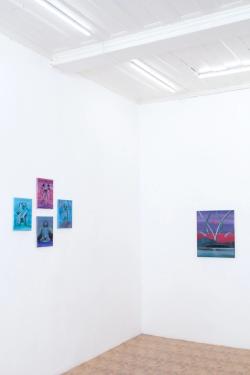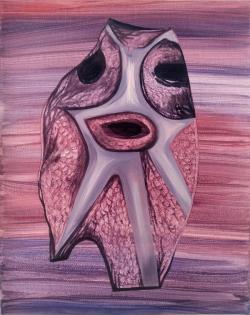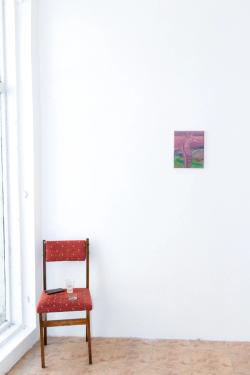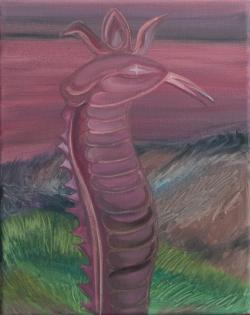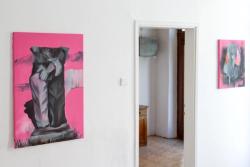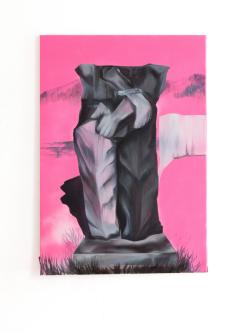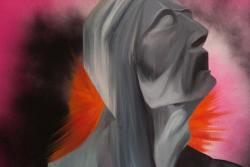Claudine Pisarek
Disappointed Ghosts
29.07. – 13.08.2023Through my artistic practice, I research how we handle artifacts that express identity and collective memory in Central-Eastern Europe and the Balkans. I often deal with monuments removed from their original location or dilapidated because they symbolize something that no longer seems relevant. By painting them, I invite the viewer to reflect on their validity.
When traveling, I spend an alarming amount of time on detours to statues and archaeological sites. I am equally intrigued by very recent examples, such as the infamous Decebal face on the Serbian-Romanian border (2004) and the anthropomorphic figures on stones the archaeologist date back to the 5th and 3rd centuries BC.
Such figures were widespread in the strongholds between the Carpathians and the Dniester River. They probably had a use in magical practices, healing, or as a way to honor a person rendered in clay. These sad-looking figures faced a sorrowful fate recently: some were ground down during the construction of hydroelectric power plants, others during the erection of fortifications. The man gave them a metaphysical dimension and then failed them.
Tracing the destruction of heritage, the exhibition also features an interpretation of a monument commemorating the fallen of the First and Second World Wars, destroyed during the construction of a motorway in Serbia (2023).
At the exhibition, we also see a painting inspired by Kapka Kassabova's essay about the island of snakes on Lake Prespa. On the subject of snakes: one of the depictions of snakes recently caught my eye in Alexandria's catacombs, which I only visited on Google Street View. To my delight, Bulgaria has some links to Egyptian culture, so a connection between the two would be legitimate – an Egyptian sarcophagus was found in the Strandja mountains with an ancient message from humankind from centuries past, a message that the Baba Wanga says we are not ready for.
There's also a barely-put-together painting with a lump of coal, from which a doyen from the Strandja could predict the future.
When preparing this exhibition, phenomena of the occult from the region influenced my painting to a large extent. However, given the static nature of the residency, most of these come from non-fiction literature. - Claudine Pisarek
Claudine Pisarek (b. 1995 in Tychy, PL) graduated from the Academy of Fine Arts in Katowice in 2021. Painter, photographer, wanderer. Pisarek (mainly) explores Balkan stories related to collective memory and creates monuments to selected fragments of reality. Pisarek admits to belonging to an informal sect of non-fiction fanatics. She currently lives and works between Łódź and Ornontowice.
Tequila Bar Fnky Mnky supports the exhibition
.
